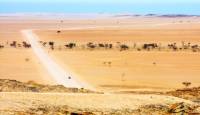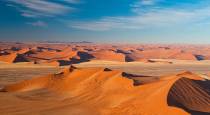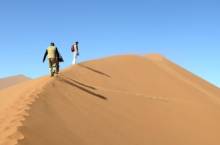Known as the gateway to northern Namibia and Ovamboland, the Etosha National Park is a thriving conservation area and one of Africa’s greatest wildlife parks. Dominated by the white salt flats of the Etosha Pan, this 22 700km² stretch of land is home to 115 mammal species and over 340 bird species who are easily spotted thanks to the sparse vegetation of this desert-like region.
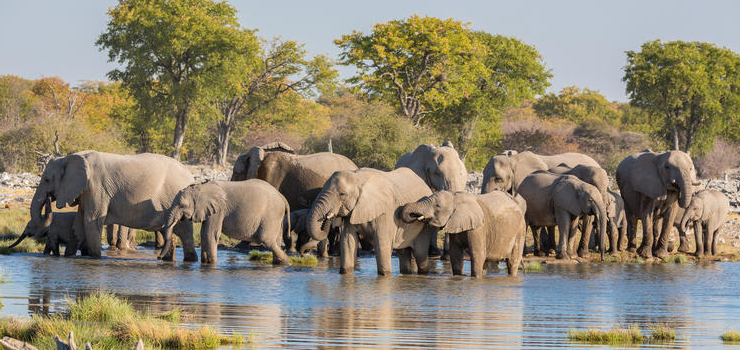
The word “Etosha” translates to “a great white area” which describes the vast, nutrient rich salt pan that covers the landscape. The Etosha Pan is the single largest salt pan in Africa and spans across 4760km²/1840mi², covering 23% of the total land in the National Park. Grassy plains surround the pan during the dry winter season (May – September) and are soon transformed into shallow lakes during the rainy summer season (October- April). These lakes act as important source of water for animals in the area and create the perfect breeding ground for the greater and lesser flamingo who migrate to the park annually to mate.
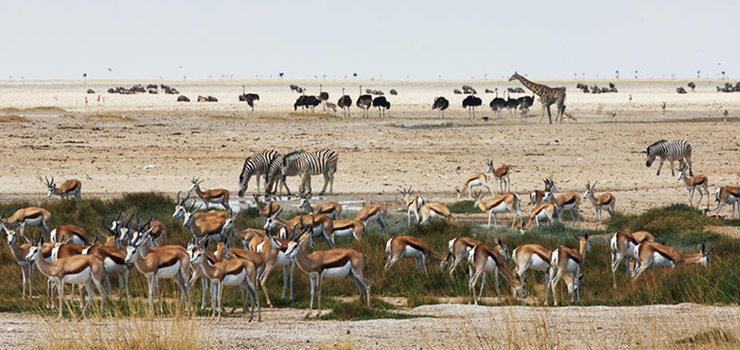
Largely unaffected by the carnage of poaching around Southern Africa over the last two decades, the Etosha National Park holds the largest population of black rhino in the world. The park has introduced a number of successful breeding programmes which have significantly increased the numbers of this critically endangered species. Leopard, cheetah, hyena, and a high density of giraffe can also be found traversing the land of this great National Park. Two near-endemic species, the black faced impala the dimara dik-dik also call this region home highlighting the fact that Etosha is a true wildlife sanctuary.
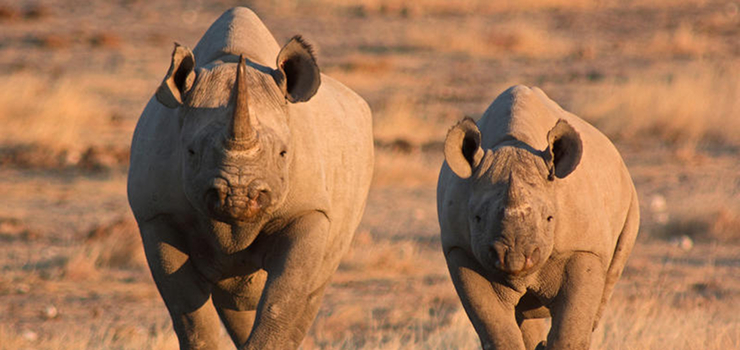
Winter in the Park is a prime time for game-viewing as water is limited and the day time temperatures are more forgiving than the summer months. Water is also scarce during this time of year however, there are a number of man-made watering holes dotted around the park where big game are often seen congregating. These watering holes are floodlit creating the perfect opportunity for game to be seen on night drives. Temperatures during the winter months are mild and range between 0°C/32°F and 23°C/73°F making it a popular time to visit the Park. To avoid the crowds, a trip to Etosha during the summer season is a must. Although temperatures soar between 20°C/68°F-40°C/104°F the lush scenery and wetter climate are brilliant for birding. A few birds that can be spotted during the summer months include pink-billed lark, red-footed falcon, sanderling and short-toed rock thrush.
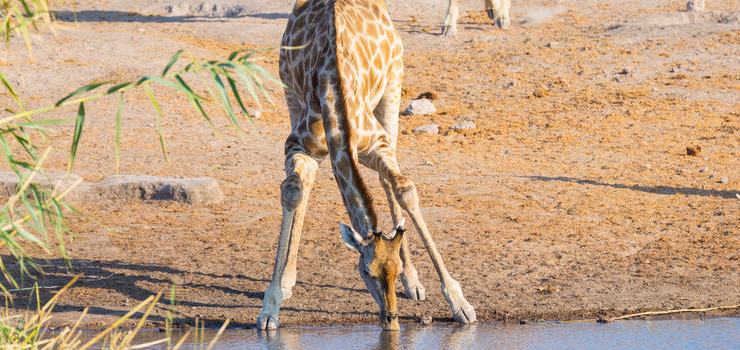
Along with some of the country’s best game-viewing and birding expeditions, a trip to Etosha is incomplete without a walking safari with the native Hai||Om people. Once the homeland to this indigenous San/Bushmen community, the Hai||om have acquired incredible knowledge about the biodiversity and surrounding environment of this area, making for an interesting and engaging bush walk through the Etosha National Park.
Accommodation in and around Etosha varies according to personal preferences and budgets. From bed and breakfasts and guest houses to tented camps and safari lodges, the area provides superb accommodation options to fit everybody’s needs.
